The electricity bill arrives? And costs are way higher than last month’s. So now, if you want to reduce charges for electricity, your refrigerator should be the first to be considered, especially the old models.
Here we introduce you to 3 easy methods to help you estimate watts for refrigerator and total electricity costs, regardless of being an electrician.
Keep reading to bring transparency to your bills.
Refrigerator Power: Starting vs. Running Watts
Starting watts or starting wattage is required to start up electric motors in refrigerators. Meanwhile, running watts are the actual power that is used to keep the machine running day or night.
A refrigerator takes way more watts of electricity to start its engine than to operate it.
For example:
- Large-sized refrigerator typically needs 200-400 running watts and 1000-1200 starting watts;
- An average home refrigerator consumes 150-250 running watts and 700-1000 starting watts;
- A small home refrigerator uses only 75-150 running watts and 400-600 starting watts;
- And a compact home/RV refrigerator uses 40-50 running watts and 80-120 starting watts.
With the latest refrigerator models, manufacturers promise an energy-efficient appliance… only for running watts!
So, if you usually turn off and plug out your home refrigerators to save electricity, kick this habit immediately. This will lead to even higher energy consumption because starting watts double or triple running watts.
3 Different And Easy Methods To know How Many Watts Does a Refrigerator Use
Method #1 – Using “EnergyGuide Label” To Check Average Running Wattage
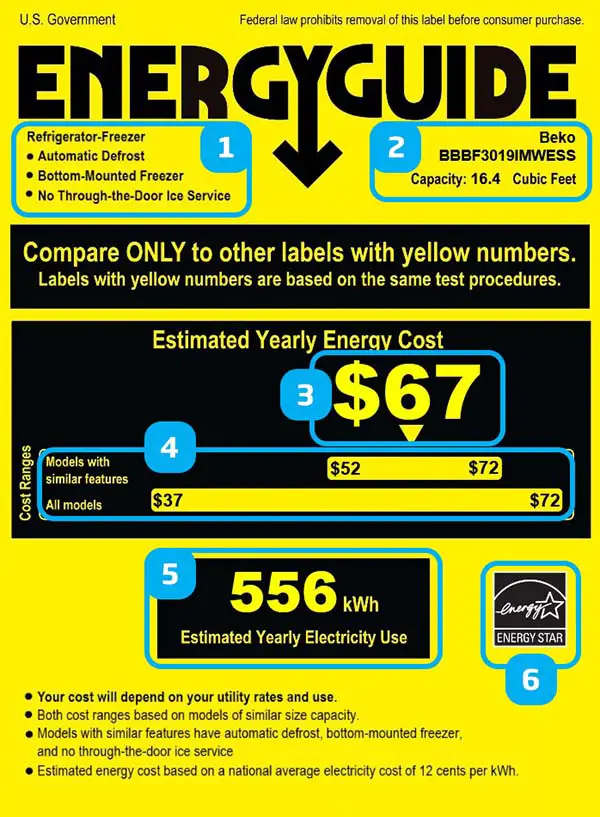
To know how many watts to run a refrigerator, let’s get familiar with the term EnergyGuide Label first. This is an illustration to show that an item meets governmentally ordered rules concerning energy efficiency. Not all electric appliances include this, but many modern refrigerators add to sustainability.
Back to the method, this is one of the most straightforward ways. Search for your refrigerator’s model number on Google and check whether it has an EnergyGuide Label. Assuming it does, you can easily find the estimated yearly electricity use and cost.
Take the above label, for example:
- The Estimated yearly Electricity Use is 556 kWh of electricity per year or 556,000 Wh per year (556 * 1000 = 227,000).
- If you take 556,000 to divide for 365 days. That will take 1523 Wh per day ( 556,000 / 365 = ~ 1523 Wh ).
- Then divide 1523 Wh by 24 hours of the day. You will get 63.47 average running watts per hour ( 622 / 24 = 63.47 ).
In addition, EnergyGuide Label is a great buying guidance. Before heading to the stores, you can check the numbers on Google and take the most energy-efficient models into comparison.
Method #2 – Buy A Meter To Measure Exact Energy Consumption
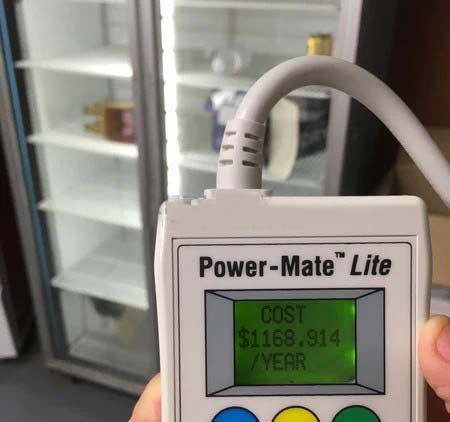
Suppose your refrigerator does not have any kind of EnergyGuide Labe or ENERGY STAR Rating. In that case, you will either have to call the appliance manufacturer / the seller for the running wattage information or just buy an energy meter.
This is an effortless device used by professional energy auditors when finding out the actual wattage of refrigerators. It also is the most accurate form of measurement. It comes with a handy dandy user instruction which is also very easy to read and follow.
First, plug the meter into the wall outlet. Then plug the refrigerator into the meter. The meter will calculate the total watts of power and kilowatt of electricity the device uses over time.
You can connect your fridge for 24 hours and check how many watts it uses. Moreover, you can test some settings and point out the causes of the waste of energy to cut down energy consumption for fridges and other common household appliances.
Method #3 – Calculate By Using the Compliance Plate
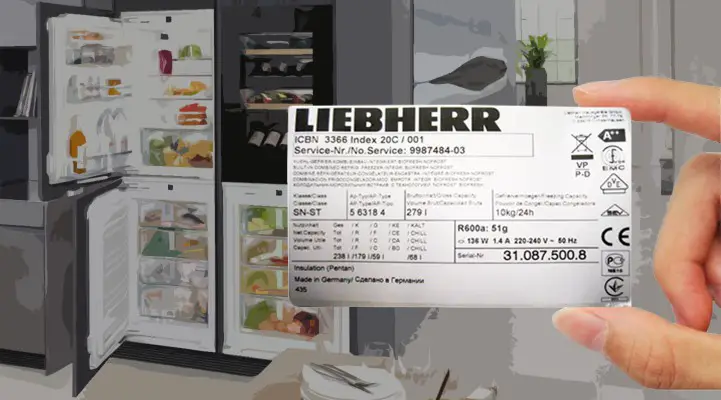
Find the compliance plate inside the refrigerator for a quick check.
The fridge compliance plate is a useful first approximation of power usage. In this case, it indicates the fridge uses 136 Watts when on.
Now let us instruct you step by step on how to calculate the average refrigerator wattage.
Step 1: Be aware of the refrigerator wattage. Like in the above-shown picture, the wattage is 136W.
Step 2: Pay attention to the duty cycle.
As a refrigerator compressor does not run continuously, it cycles on and off. So the percentage of time the compressor run is called the duty cycle.
The duty cycle typically falls around 33 to 35%.
Step 3: Calculate the total energy per day
Let’s assume a 33% duty cycle worth 8 hours of operating time per day (a compressor runs only 8 out of 24 hours per day)
So, the total energy will be 1088 Wh (136W x 8h = 1088Wh = 1.088 kWh of electricity per day)
However, the above calculation is not spot-on because the fridge may not consume all the other variables that affect power usage, such as temperature settings, lights, etc.
See more: How Many Watts Does A Box Fan Use?
How To Estimate Your Refrigerator’s Energy Consumption and Cost
Now, after answering the question of how many watts a refrigerator uses, it is rather simple to find out the required energy and monthly electricity cost for different types of refrigerators.
Assuming the cost for 1kWh is $0.15, so
- A large home refrigerator with 300 Wh will cost ~$0.045 per hour or $1,08 worth of daily electricity usage.
- A standard refrigerator needs 150 Wh, which will cost ~$0.0225 per hour or $0,54 worth of daily electricity usage.
- A mini-fridge requires 100 Wh, and it will cost ~$0.015 per hour or $0,36 worth of daily electricity usage.
- And a compact home/RV refrigerator uses about 50 Wh, and it will cost ~$0.0075 per hour or $0.18 worth of daily electricity usage.
However, a friendly reminder that these are just average wattage. The actual monthly electricity usage and cost differ greatly depending on many factors. They can be internal factors like refrigerator size, age, and the difference between smaller and larger units. Or external factors like ambient temperature (air around refrigerators), local electric energy prices, the frequency of opening one specific unit, etc.
View more: How Many Watts Does A TV Use
Final Words
Without a refrigerator, a kitchen is no longer a kitchen. However, as the refrigerator may be the number one factor in power consumption, it should be the first to be investigated when your bills are unusually high. It’s essential to calculate how many watts a refrigerator uses to understand its burden on your monthly electric bill and what else you can do to reach lower watts for the refrigerator.

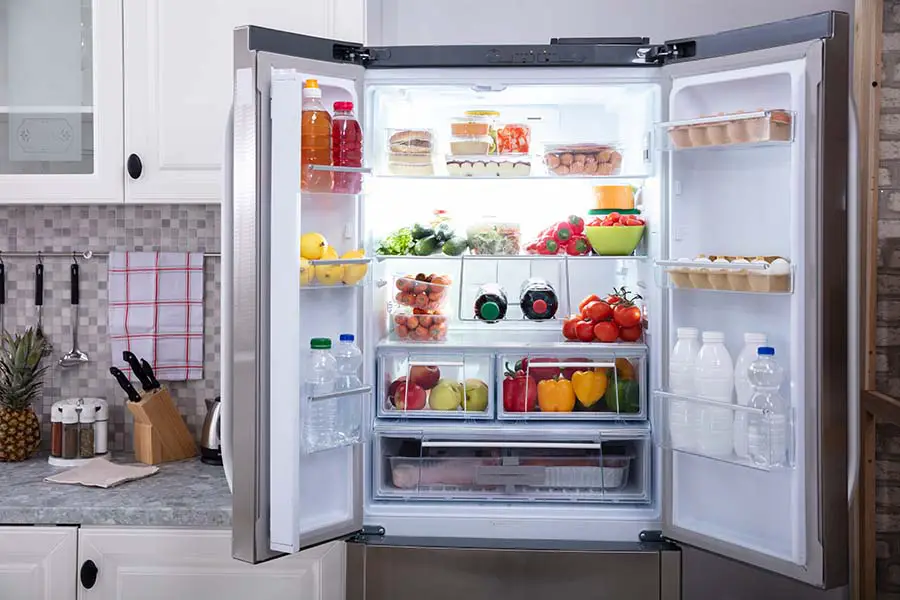

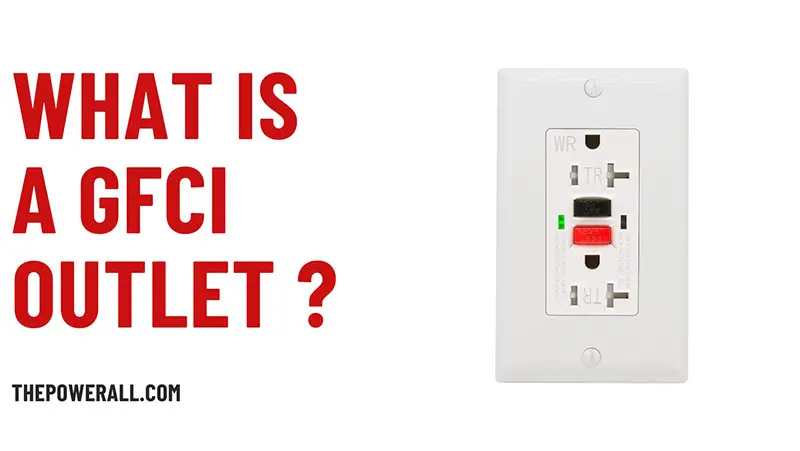

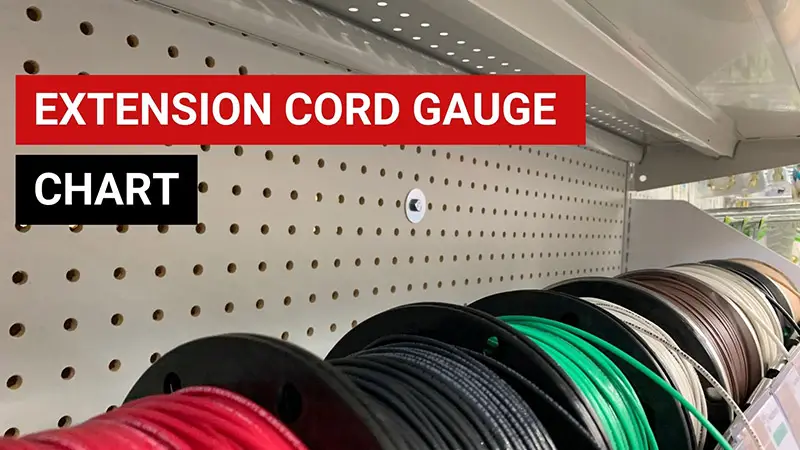



0 Comments